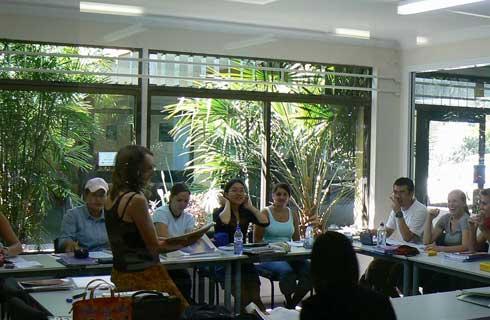- IDP China>
- 课程库>
- 计算机科学>
- 计算机与信息科学>
- 人工智能与机器人>
- Doctor of Philosophy in Computing and Information Sciences- Artificial Intelligence
Doctor of Philosophy in Computing and Information Sciences- Artificial Intelligence

学历文凭
Ph.D.

专业院系
Department of Computing and Information Sciences

开学时间

课程时长

课程学费

国际学生入学条件
IDP—雅思考试联合主办方

雅思考试总分
6.5
- 雅思总分:6.5
- 托福网考总分:88
- 托福笔试总分:160
- 其他语言考试:PTE Academics - 60
CRICOS代码:
申请截止日期: 请与IDP联系 以获取详细信息。
课程简介
相关申请
 预科
预科 奖学金
奖学金 实习机会
实习机会 在校学习
在校学习 跨境学习
跨境学习 校园授课-线上开始
校园授课-线上开始 在线/远程学习
在线/远程学习
开学时间&学费
学费信息仅供参考,请与IDP联系以获取详细信息
| 开学时间 | 时长 | 学费 | 地点 |
|---|
学校排名

世界排名601
数据源:
泰晤士高等教育世界大学排名
本校相关课程

土木工程技术理学学士
学历文凭
Bachelor Degree
开学日期
课程费用总额


计算机工程技术理学学士
学历文凭
Bachelor Degree
开学日期
课程费用总额


电气工程技术科学学士学位
学历文凭
Bachelor Degree
开学日期
课程费用总额


机电工程技术理学学士
学历文凭
Bachelor Degree
开学日期
课程费用总额


Bachelor of Science in Environmental Sustainability, Health and Safety (Co-op)
学历文凭
Bachelor Degree
开学日期
课程费用总额


机械工程技术科学学士学位
学历文凭
Bachelor Degree
开学日期
课程费用总额

其他相关课程

Doctor of Philosophy in Computer Science- AI and Robotics
 里海大学
里海大学泰晤士高等教育世界大学排名:672
学历文凭
Ph.D.
开学日期
课程费用总额


Master of Science in Electrical and Computer Engineering - Robotics and Autonomous Systems (Human Robot Interaction)
 密歇根大学安娜堡分校
密歇根大学安娜堡分校学历文凭
Masters Degree
开学日期
课程费用总额


Master of Science in Aerospace Engineering - Manufacturing and Robotics
 加州州立大学长滩分校
加州州立大学长滩分校学历文凭
Masters Degree
开学日期
课程费用总额


Doctor of Philosophy in Human-Centered Computing
 佐治亚理工学院
佐治亚理工学院泰晤士高等教育世界大学排名:41
学历文凭
Ph.D.
开学日期
课程费用总额


Master of Science in Robotics
 加州大学河滨分校
加州大学河滨分校学历文凭
Masters Degree
开学日期
课程费用总额


数字媒体信息学文学士
 威得恩大学-国际学习中心(StudyGroup)
威得恩大学-国际学习中心(StudyGroup)学历文凭
Bachelor Degree
开学日期
课程费用总额











